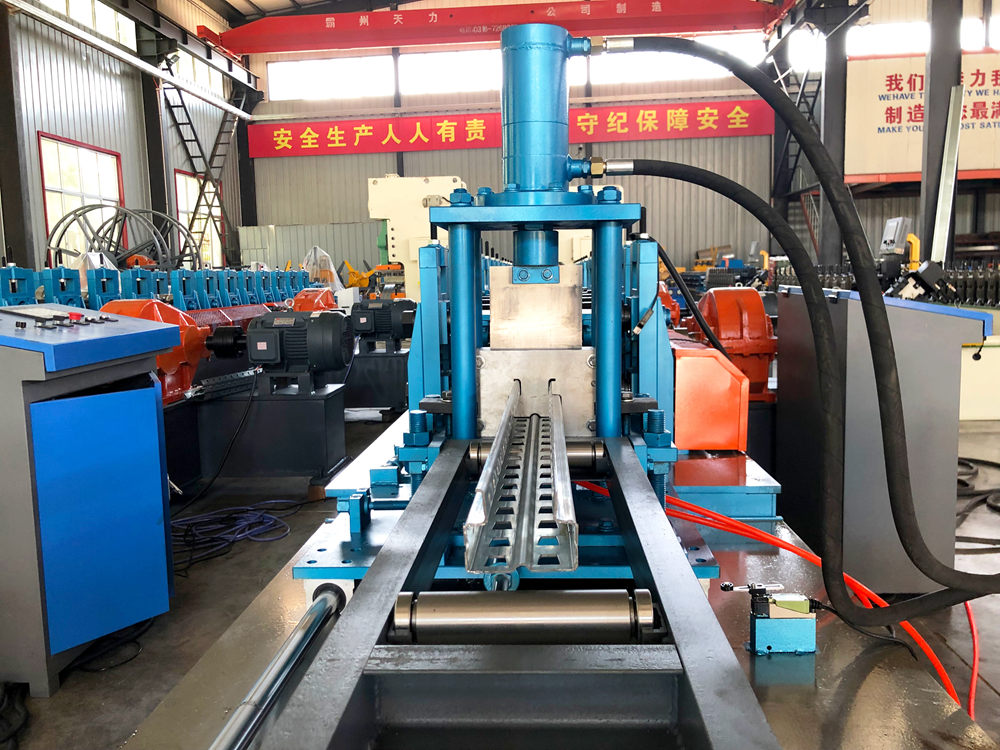
Stud and Track Keel Roll Forming An Overview
The construction industry is constantly evolving, with new techniques and technologies being developed to improve efficiency and product quality. One such technology that has gained popularity in recent years is the stud and track keel roll forming process. This innovative approach allows for the mass production of steel framing components, enhancing both the speed and cost-effectiveness of construction projects.
Understanding Stud and Track Keel Roll Forming
Stud and track roll forming is a manufacturing process that shapes steel into specific profiles used primarily in the construction of walls and ceilings. The stud refers to vertical supports that form the framework of walls, while track is the horizontal component that anchors these studs. Keel roll forming, on the other hand, involves creating a continuous piece of metal with a keel-like shape that provides additional structural integrity.
The roll forming process starts with a flat strip of steel sheet, which is fed into a series of rollers. These rollers gradually shape the metal into the desired profile by bending it around the rollers in a continuous fashion. This method is particularly efficient because it enables the production of long lengths of framing members with consistent dimensions, minimizing waste and ensuring uniformity.
The Advantages of Stud and Track Keel Roll Forming
1. Speed and Efficiency One of the primary advantages of roll forming is its speed. The continuous process allows for rapid production of components, which can be crucial in time-sensitive construction projects. Additionally, automated systems can run without constant operator intervention, further enhancing efficiency.
2. Cost-Effectiveness By producing components in bulk and minimizing material waste, stud and track roll forming can significantly reduce production costs. Moreover, the consistent quality of the products reduces the need for rework and adjustments on-site, saving both time and money during installation.

3. Design Flexibility Roll forming technology allows for a wide range of profiles to be produced, catering to various architectural and structural requirements. This flexibility enables designers and engineers to innovate and create customized solutions for specific projects.
4. High Strength-to-Weight Ratio Steel has a high strength-to-weight ratio, making it an ideal material for construction. The keel-shaped profiles produced through this process provide enhanced strength while remaining lightweight, facilitating easier handling and installation.
5. Sustainability The roll forming process is inherently more efficient compared to traditional methods, resulting in lower energy consumption and reduced material waste. Additionally, steel is a recyclable material, further enhancing the sustainability of projects utilizing stud and track keel roll formed components.
Applications in Construction
Stud and track keel roll forming is widely used in various construction applications. It is predominantly applied in commercial and residential construction, particularly for framing interior walls, ceilings, and partitions. These components can be easily integrated into both new constructions and renovations, providing a versatile solution for various building types.
Moreover, this technology is increasingly utilized in the prefabrication of wall panels, which can be constructed off-site and assembled on location. This prefabrication approach not only accelerates the construction timeline but also improves overall quality, as components are manufactured in a controlled environment.
Conclusion
In conclusion, stud and track keel roll forming represents a significant advancement in the construction industry's manufacturing processes. By providing efficient, cost-effective, and customizable solutions for framing components, this technology is poised to play a pivotal role in modern construction. As the demand for faster and more sustainable building practices continues to grow, the adoption of stud and track keel roll forming is likely to increase, shaping the future of construction in an innovative and productive manner.